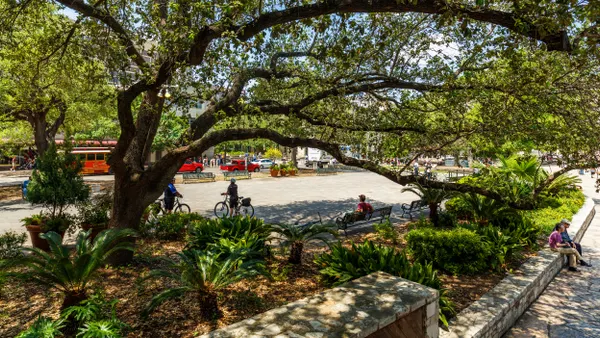Editor's Note: The following is a guest post from Todd Thibodeaux, president and CEO of CompTIA.
When people think about the next great waves of technology aimed at improving our everyday lives, the concept of "smart cities" is usually on the short list, up there with artificial intelligence (AI), robotics and autonomous vehicles.
We’ve been dreaming about smart cities for decades, and now some of these ideas are finally becoming reality. Any baby boomers worth their salt remember the Jetsons where George, Jane, Judy and Elroy lived in the city of the future with automation and intelligent systems at their fingertips. Plus, they had flying cars! And now with the advent of the internet of things (IoT), we’ve inched ever-closer to making some of these things actually come true.
Smart cities will use technology in myriad ways to make our lives easier and more efficient. Think of a smart city water system where a dynamic AI-controlled filtration and distribution network recycles and purifies waste water, so it can be reused again and again. Or consider a municipal electric grid that responds instantly to dips and spikes from renewable energy sources and saves consumers millions of dollars a year while saving system owners billions in maintenance costs. Or how about a traffic system effortlessly delivering vehicles to their destinations without a hint of a backup?
We’ll see smarter law enforcement as well as health systems that can detect infectious airborne diseases before they affect those most at risk. And, as these smart interconnected systems and networks develop, I’m confident we’ll find even more powerful ways to make the places we live, work and shop even smarter.
However, there are a few barriers to address before a city can transition to "smart."
Budget
These advances won’t come cheap. They’ll require significant investments of time and resources. Since the benefits will accrue largely in both concentrated urban centers and the surrounding suburbs, the burden is likely to fall on cash-strapped cities and municipalities. Most states are also under the constraints of a tight budget. Cities will be competing for whatever dollars they can grab from those limited budgets.
You’ll likely here the phrase "public-private partnership" in the context of smart cities. In these arrangements, cities have the power of easement through zoning and tax relief authority and work with private companies that have knowhow, money and motive. A perfect example is the way cities and states are going all out to attract Amazon to their region.
Some help may be coming in the form of two federal smart cities bills, though. HR 3895 the "Smart Cities and Communities Act of 2017” would provide $220 million annually for smart city focused technology demonstration programs. HR 4151 the "Smart Technology for Resilient, Efficient, Economic and Reliable Transportation in Cities and Communities Act" (STREET Act) authorizes $100 million annually to small to mid-sized cities for small transportation technology demonstration programs. But these are drops in the bucket and more must be done to leverage such dollars to attract other funding.
Managing risk
Cities are notoriously risk-averse when considering new technology. There are a handful of approaches, however, that would allow a city to mitigate technological risk and help drive down cost of deployment:
- Pilot programs: Several cities have instituted pilot programs that allow cities to bake out risk while helping clarify return on investment.
- Regulatory Sandboxes: A regulatory sandbox allows entrepreneurial companies to conduct live experiments in a controlled environment under a regulator's supervision. For example, the State of Arizona recently launched a regulatory sandbox for FinTech.
- University-based IoT Innovation Labs: Many U.S. universities host IoT Innovation Labs. The labs allow researchers to test and validate IoT-enabled technologies, thus helping mitigate the risk to cities before the actual technology is implemented.
Unless we address ways in which to de-escalate risk we will fall short of our "Jetsons" dream. We know, for example, that high speed infrastructure has been slow to materialize in less profitable rural areas already facing a deficit of wired broadband backbone and the rollout of 5G networks are likely to be no less problematic. Smart city programs, while on the upswing, are not ubiquitous. There is much work to be done.
Some of this is going to boil down to how fast do we want to do this, and where do we want to start? As a nation we aren't in the business (and don’t have the luxury) of building new cities from scratch, so we’re going to have to get really good at retrofitting. And chances are, these new technologies, if implemented, are going to create a lot of jobs and increase tax revenue allowing cities to play the crucial role they need to play in the provision of the "public goods" resulting from smarter cities.










